This offseason, we’ll be breaking down the performance of each unit – passing and rushing offense and defense – with a look ahead to 2022 and what this means for the Irish. First up is the Notre Dame run game, which struggled immensely through the first half of the year despite talented running backs, then found its footing in the second half as the schedule softened.
The offensive line cycle bottoms out
A step back for the offensive line was a given in 2021 with the loss of four veteran starters. Still, I don’t think anyone envisioned the transition being so disruptive – between Cain Madden’s addition via the portal and two battle-tested guys stepping in (Josh Lugg and Zeke Correll), things might be seamlessly reassembled. That theory quickly proved to be wrong, and shaky depth instantly emerged as a serious issue with Blake Fisher going down in the season opener. It was a perfect storm, as Tosh Baker and Michael Carmody auditioned to replace Fisher at left tackle while Notre Dame played a tenacious slate of defenses early in the schedule, highlighted by Wisconsin and Cincinnati.

Through the first half of the year, Notre Dame was one of the very worst offensive lines in the Power 5, ranking 100th+ in rushing opportunity rate, run success rate, stuff rate allowed, and sack rate allowed. Kyren Williams and Chris Tyree were constantly dodging tacklers at or behind the line of scrimmage, and the lack of efficient run game loaded pressure onto a passing game also prone to negative plays.
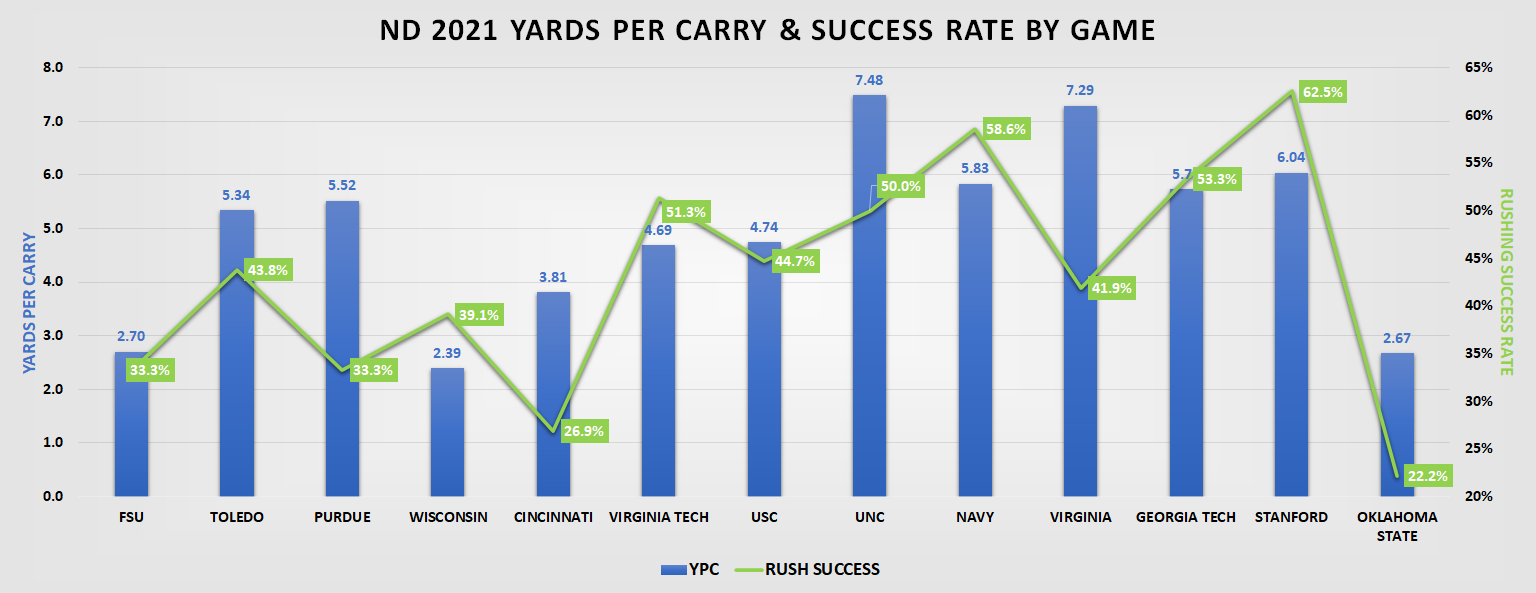
The turnaround was sparked by personnel changes and an immense softening of the schedule after the midseason bye week. Joe Alt and Andrew Kristofic stabilized the left side of the line, and their steady competence had a strong ripple effect on the offense as a whole. The Irish ran the ball efficiently and allowed Jack Coan to get comfortable behind better protection and a more balanced attack. The difference between the first six games of the regular season and the final six was striking:
- First six games (FSU, Toledo, Purdue, Wisconsin, Cincinnati, Virginia Tech): Average Defensive F+ Rating – 27.5, including two top-ten defenses (Wisconsin #2, Cincinnati #9) and only two outside the top 30 (#39 FSU / #62 VT)
- Last six games (USC, UNC, Navy, Virginia, Georgia Tech, Stanford): Average Defensive F+ Rating – 99.3, including five of six defense ranked 99th or worse (only Navy better at 71st)
The issue projecting this performance forward is separating the improved performance from the schedule. The bounceback coincided with some truly terrible defenses late in the season. The bowl game against Oklahoma State served as a bounce-back to reality, as the line again struggled to generate anything on the ground. Against the stout Cowboys defense, Notre Dame rushed for just 2.67 yards per carry and a 22.2% success rate.
Kyren’s departure leaves a big void, but there are several strong options
Kyren Williams made the most of his opportunities despite the offensive line inconsistency. Buoyed by the second half of the season, he still finished with nearly five yards per carry despite getting stuffed for no gain or a loss on more than 20% of his rushes. Williams also finished with the highest explosive carry rate of any back, more than doubling up Chris Tyree, who battled injuries through the middle sector of the year.

The Tyree versus Diggs battle for carries and lead back status will be fascinating. 2021 was a brutal year for Tyree, who stylistically feels like a back who can excel behind a line creating space but struggles to create without solid blocking. Still, just three carries of 10+ yards for the season is very rough output for a back with sprinter speed.
Diggs had an impressive freshman campaign, boosting his stats by exclusively getting carries behind the improved line in the second half of the season. He showed patience and vision rare for a first-year player, even if that patience sometimes bordered on indecisiveness. It wouldn’t be shocking for the sophomore to lead the team in rushing next year, especially if Tyree sees more snaps running routes as a receiver to help out that thin group. (Note: Diggs tore his labrum in the Blue-Gold game, and could be questionable for the start of the season after undergoing surgery).
The most exciting numbers here belong to Tyler Buchner, who was incredibly efficient and explosive as a runner in limited opportunities. Quarterbacks have an advantage versus running backs in these breakdowns, as they can benefit from scramble yards and not have sacks counted against them. But Buchner bested Ian Book’s 2020 rushing stats behind a much shakier line, which speaks to his physical gifts as a runner. He will continue to attract a lot of attention from opposing defenses as a rushing threat, making life easier for the running backs this fall.
2022 Outlook: How much improvement is realistic?
The offensive line and running game will be much better in 2022, but I worry expectations may be skyrocketing a bit too quickly. There’s so much excitement for the future – Harry Hiestand returns, Joe Alt and Blake Fisher are oozing with potential, and Jarrett Patterson forgoing the draft are all best-case scenarios. But it’s a lot to ask for two true sophomores to fuel a massive improvement, and fans have quickly forgotten that while Hiestand is a legendary coach, his lines haven’t always been dominant, especially against strong defenses. The upside for the Irish rushing game is immense with Buchner at the helm, but can it serve as the offense’s backbone if the passing attack struggles to get going?
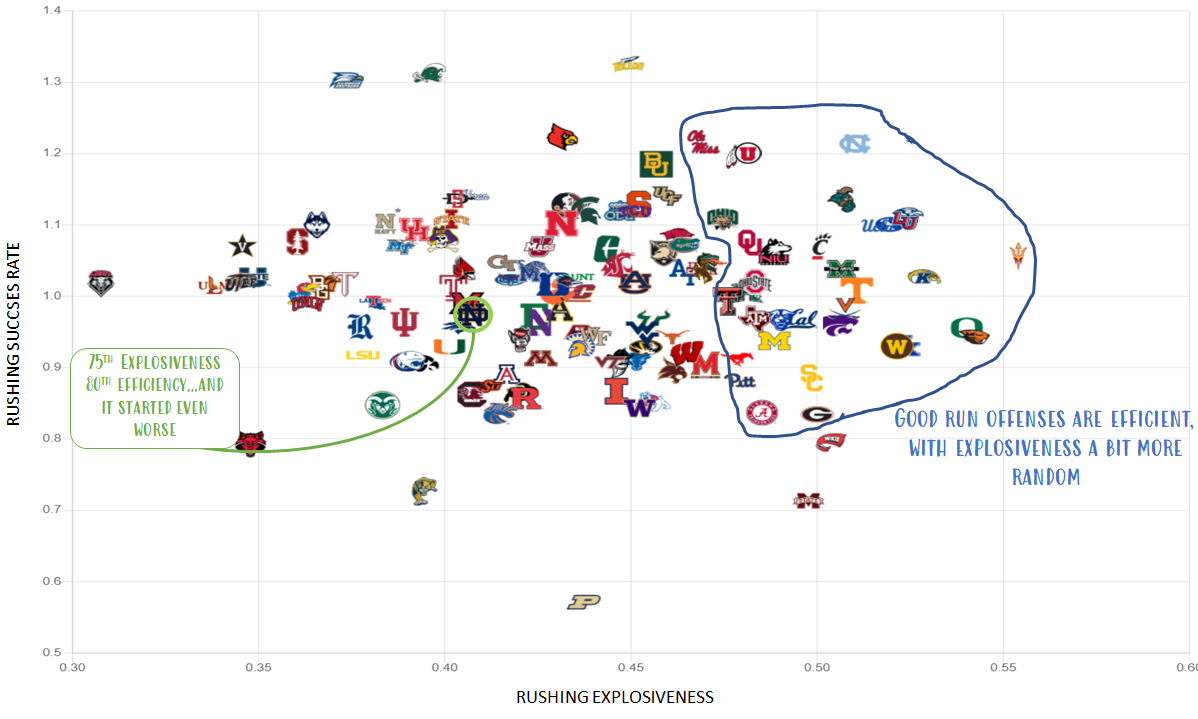
The other underrated element to consider is the potential contribution of tight ends and receivers to the rushing attack. Notre Dame’s best rushing seasons have featured great offensive linemen and willing and capable receivers blocking on the perimeter and tight ends adding to that strength. The 2021 receivers are a thin position group both in depth and size; the big receivers are some of the least experienced, which typically move pretty closely with blocking ability. George Takacs moving on also leaves the tight end room solid in receiving ability but possibly weaker than usual with in-line blocking types.
Still, with Buchner at the helm, the rushing attack should be easily top-40 and probably more likely than not a top-25 ground attack. As long as there’s a semblance of a passing threat, the defenses outside of Ohio State and Clemson will be overmatched in the trenches. Throw in the potential for more creativity with an unsupervised (or less supervised, at least) Tommy Rees, and the future potential is spectacular, it just may be a year early for the ground game to be at a 10-15 level and really carry this offense.

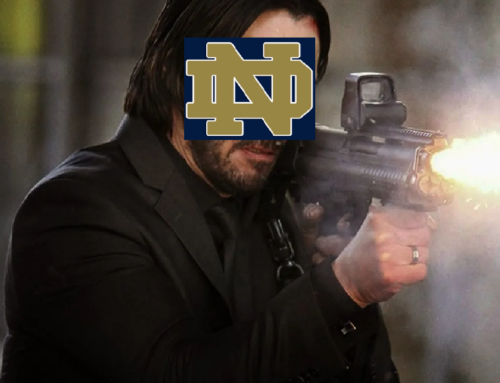
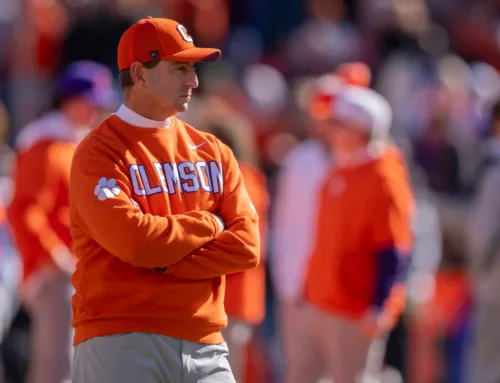
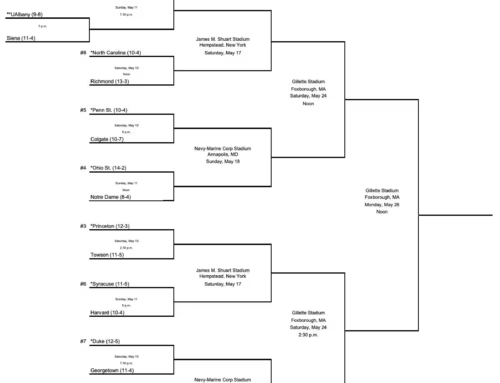
The good news is that Alt already fueled a massive improvement starting with the VT game. Maybe that was a “nowhere to go but up” type improvement, but we’ve already seen that he can be a transformative player, so it’s realistic to think that he could fuel an improvement from meh/OK to very good.
Not to reignite this whole debate, but running game and OL is one area in which I think we don’t need to lose sleep over the Fiesta Bowl performance.
That’s fair – I think a general temptation I’d warn against is it’s easy to fall into is looking at Alt + Fisher as closer to fully realized than they are.
Everyone is salivating over them as potential 1st round types, but it’s a journey to get there and they’ve played something like 10 games total. I have no doubt they’ll be solid, but I think a lot of fans are assuming they’ll be something like all-conference level this year.
Said another way, if you look at the OL as whole, it will definitely be solid. But who are you confident will be winning their matchups against OSU + Clemson? Patterson and? I’m not sure Fisher + Alt are there quite yet, and Kristofic + Lugg either. That’s a high bar but it might be what they need to get to double-digit wins again.
Oh, sure. There’s quite a difference between pancaking GT’s DL and being able to consistently get a push on Ohio State and Clemson.
Yea I’m still not sure that Alt really fueled a massive improvement given the poor defenses.
I would expect that he might be an average starter for an ND OL this year – which is pretty good for a true sophomore. But that’s not quite dominating or fueling massive improvements.
I was curious, so here are the rush defense rankings of ND’s opponents last year
FSU – 55
Toledo – 64
Purdue – 77
Wisconsin – 1
Cincy – 62
VT – 91
AVERAGE – 58.3
SC – 88
UNC – 97
Navy – 32
UVA – 123
GT – 100
Stanford – 127
AVERAGE – 94.5
So yeah, big drop in quality in the second half, although Wisconsin was the only true world-beater in this stat that we faced all year.
Another visual representation of Buchner’s number among the others:
I go back and forth about worrying the expectations for OL are too high and then feeling like the threat +reality of Buchner’s legs may just wreck a lot of teams regardless
I think we’ll have the Annual Bad Hiestand Game which seemed to befall even the best of his lines at ND. But I am pretty high on the run game with Buchner’s skills and Tyree has nowhere to go up but up in explosiveness.
There’s talk (II podcast) that Patterson moves to guard and Correll gets the starting center job.
Alt’s rapid body transformation, the last couple years, has me thinking he might be much more comfortable at his new weight and make big gains on the field this season. The line is certainly going to be tested early. Pass that test and look out.
If that happens Spindler’s path to playing time this year becomes even more murky.